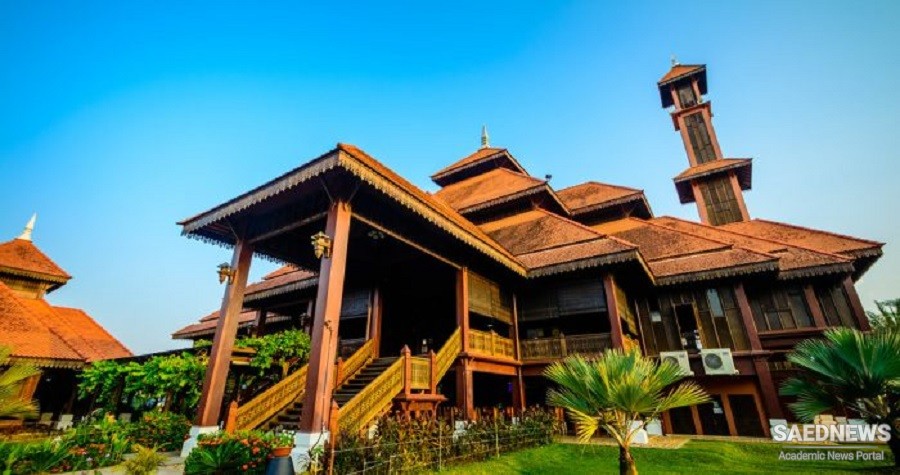Unlike the common postmodern mosque designs in Malaysia, the mosque was built without the use of onion- shaped domes; instead, it was built using Malay traditional carvings and the use of hip roofs of various sizes. Officiated by the Sultan of Terengganu, Sultan Mizan Zainal Abidin in 2012, the mosque has since become a focal attraction in this area. Surrounded by a police station and many residential houses, the mosque portrays the thriving traditional Malay woodcarving industry that has flourished in the East Coast state of Terengganu, thus keeping alive and promoting the state’s traditional skills.
The architecture of the mosque was inspired by Masjid Kampung Laut and the Kelantanese Perabung Lima traditional houses. This is seen in its layout design and the use of the pyramidal roof forms, where the tiered roof spans over the rectangular layout extended over the veranda areas and shading the area from the hot tropical sun. The mosque proper includes the main prayer hall with an Imam’s room, the female prayer area, and the veranda area is raised above on the upper ground floor level. On the first floor, a library space is provided. A large area for a hall and dining area is also located on the ground level. A separate block houses the toilet and ablution facilities. For practical reasons, its post and beam structure system, are made of reinforced concrete that have been clad with chengal hardwood to
appear to look as solid as it was made of timber. However, certain parts such as the roof wall panels, floor boards and staircases are made of solid wood. Elaborate Malay carvings of songket motif can be seen throughout the balustrade and lattice panels, combined with floral motifs known as awan larat carved into the 12 main doors and on the crafted panel frames on its high wall, called the janda berhias. A unique carving pattern with pointed elements is also visible on the fascia boards around the mosque.
The high hip roof is finished with clay tiles, arranged in singgora form, reminiscent of many former Malay roof clay tiled traditional buildings built in the state. The upper pyramidal tier is crowned with white pointed pinnacles. On the north side, a detached minaret is built on a square base, covered by janda berhias wall panels placed before the top of the hip roof. The pitched roof is a common feature used in the tropical Malay architecture, thus preventing rain water from splashing onto the timber structure. A similar hip roof replication is also seen on the main entrance gateway into the mosque compound area. Elevated from the ground and linked by a staircase, the main prayer hall is preceded by a large veranda area used as an overspill prayer area. Stepping into the main prayer hall, a grandeur yet humble ambience is presented, contributed by the exposed roof structures of the high hip roof. The hall is lit passively by daylight which flows through various panel openings. The qibla wall comprised an elevated timber platform, where the minbar is located, covered by the two-tiered roof. The allocated mihrab niche is occupied by the pulpit platform which also is used to pin-points the qibla direction (Aziz, A. A., 2016).


 The Role of Prophet Muhammad
The Role of Prophet Muhammad














































